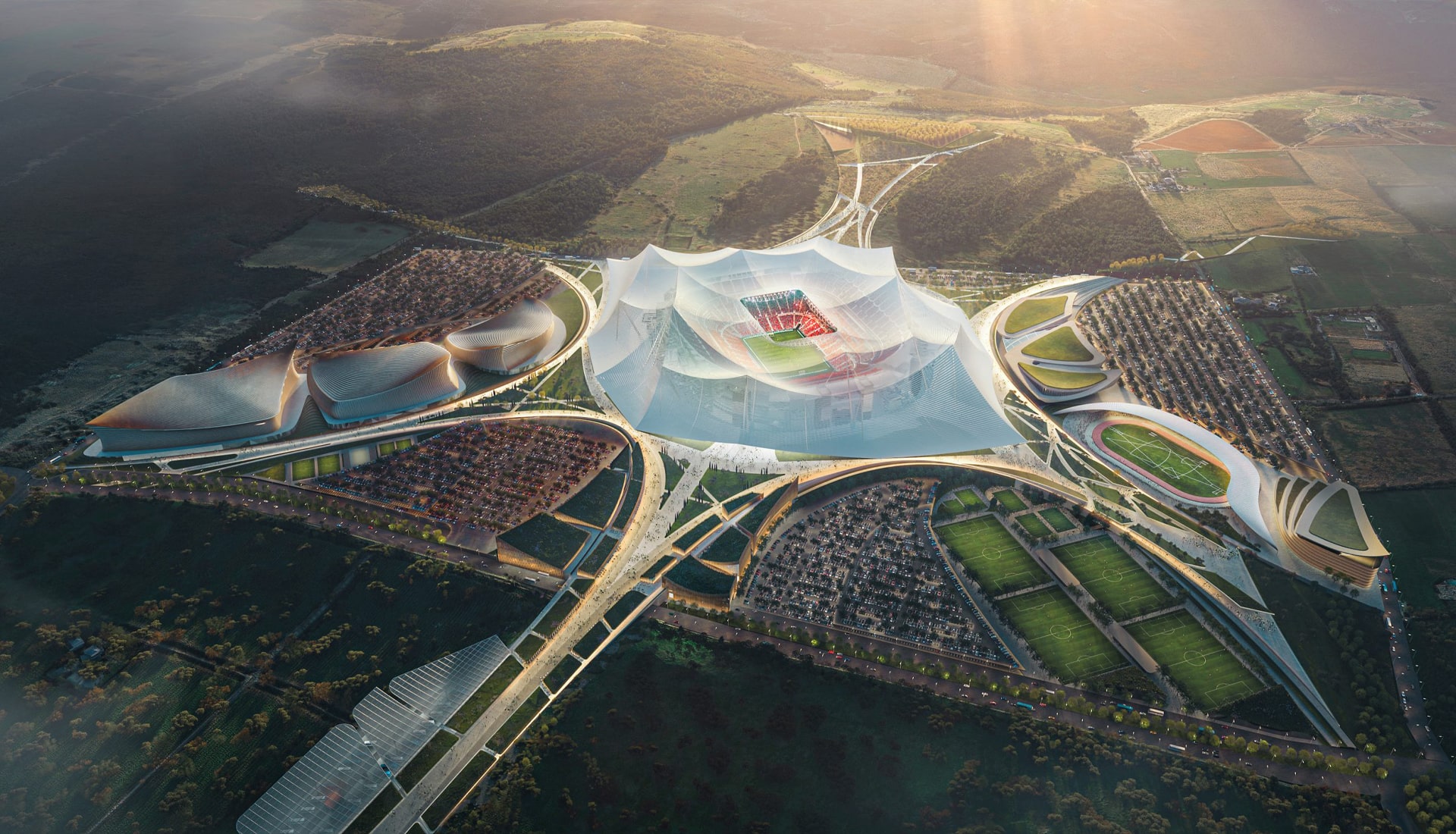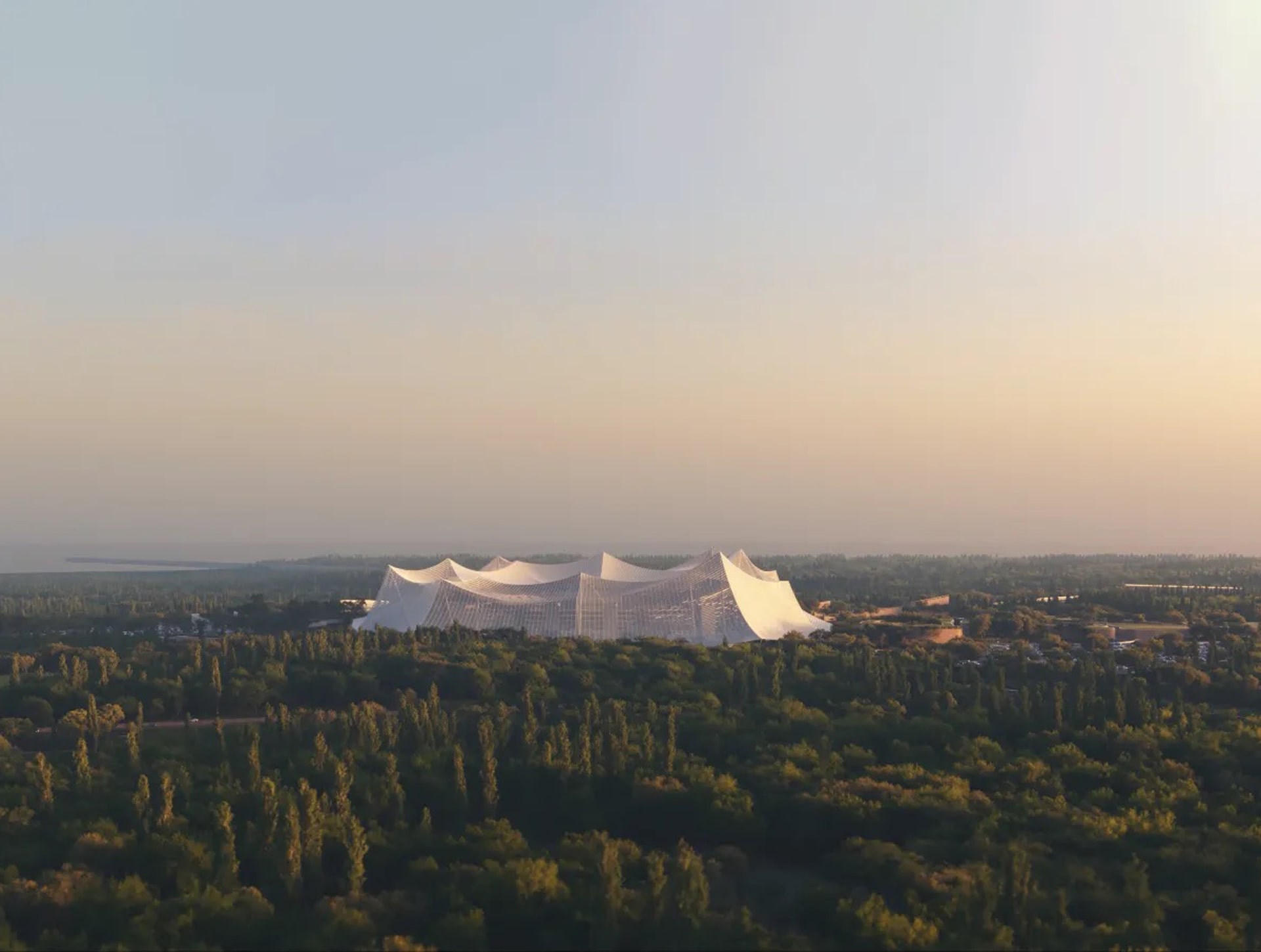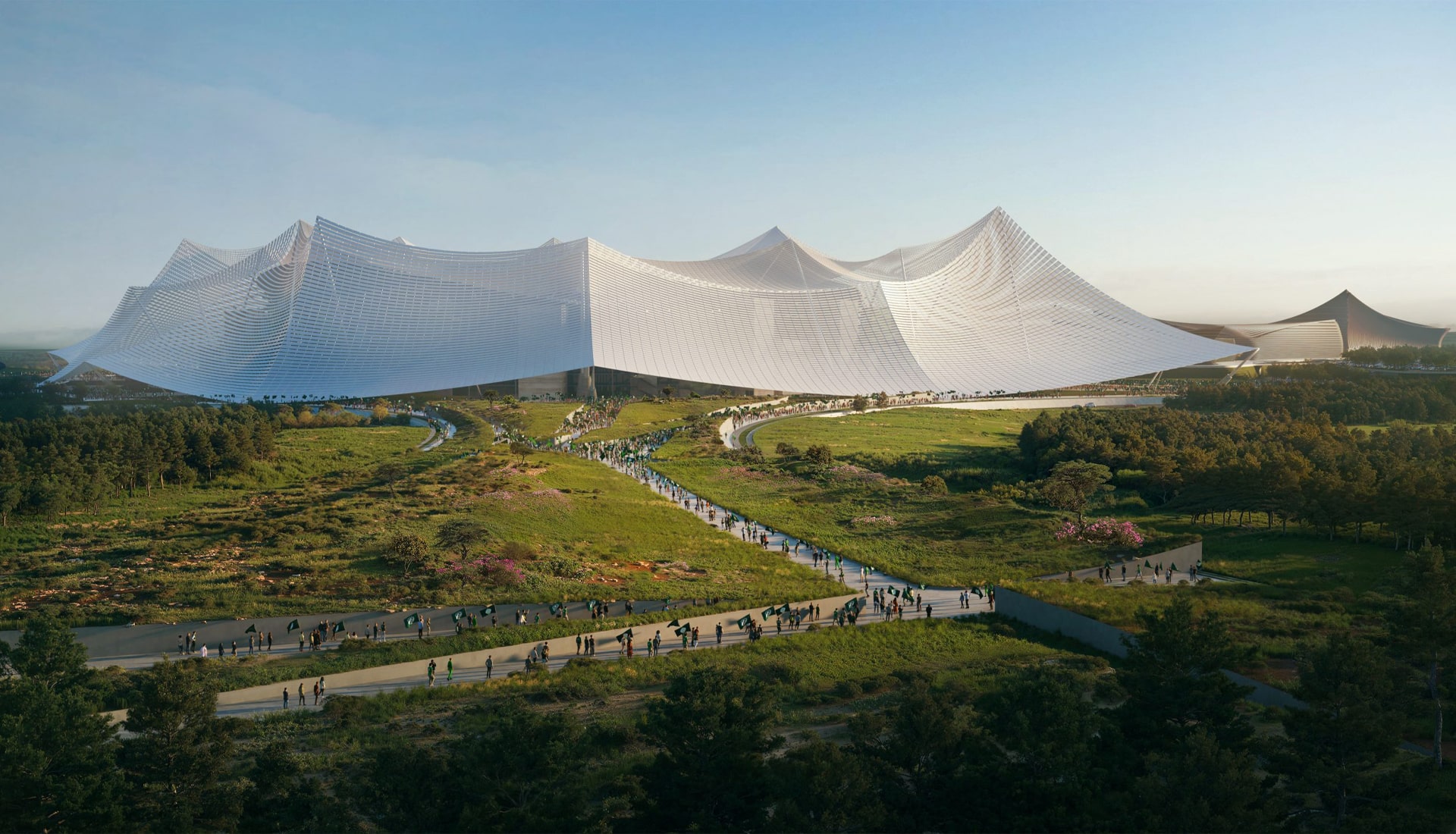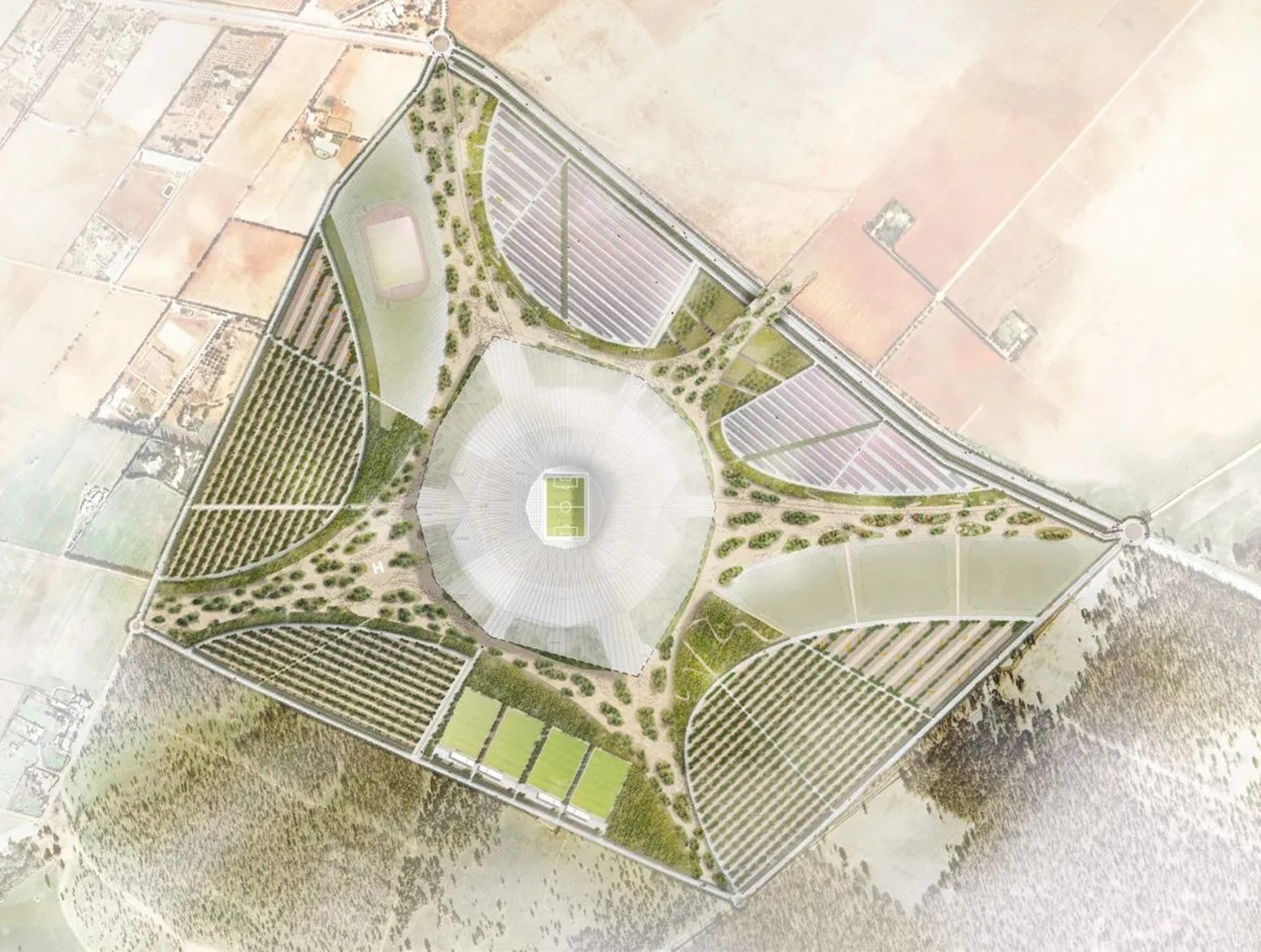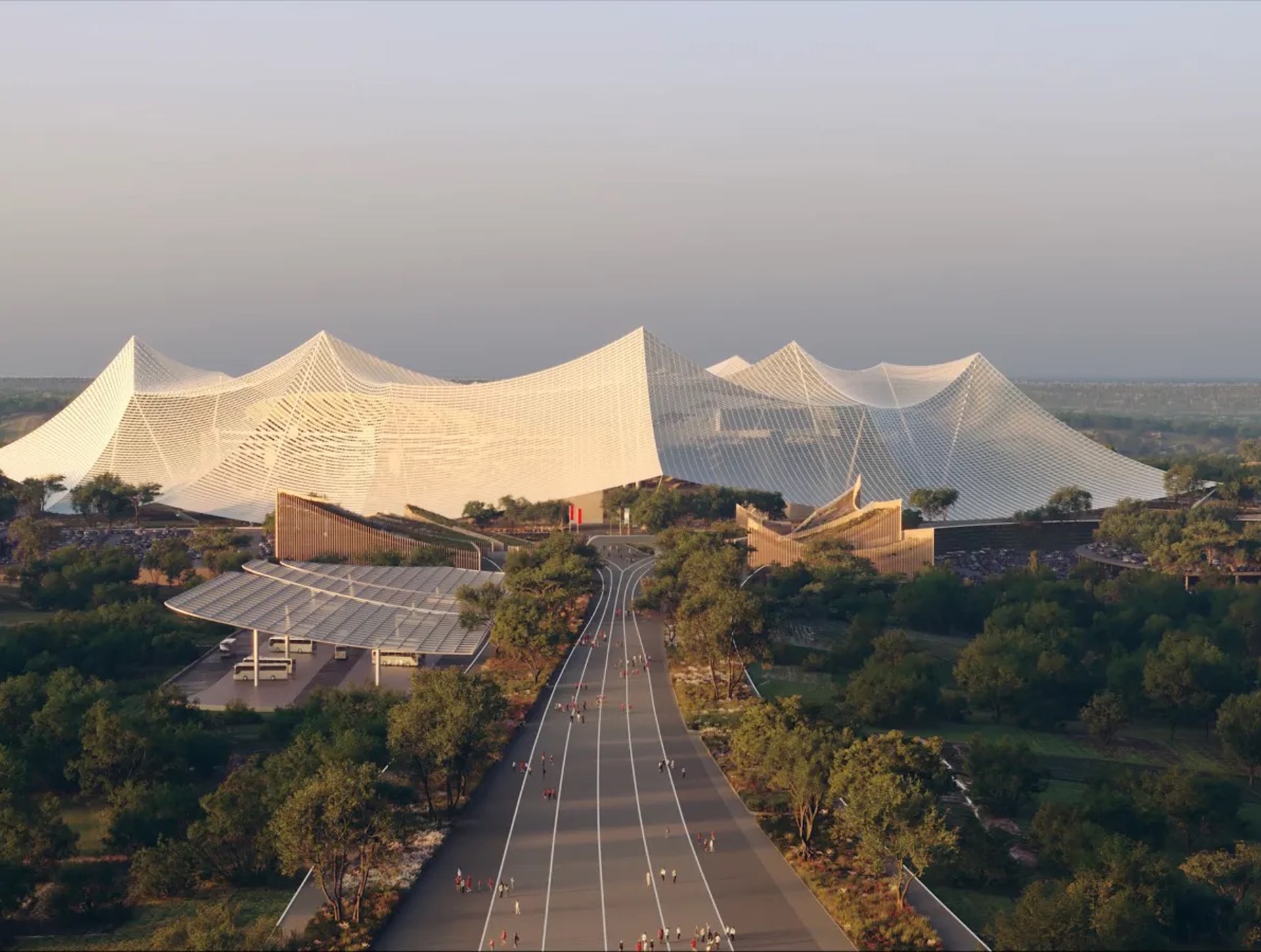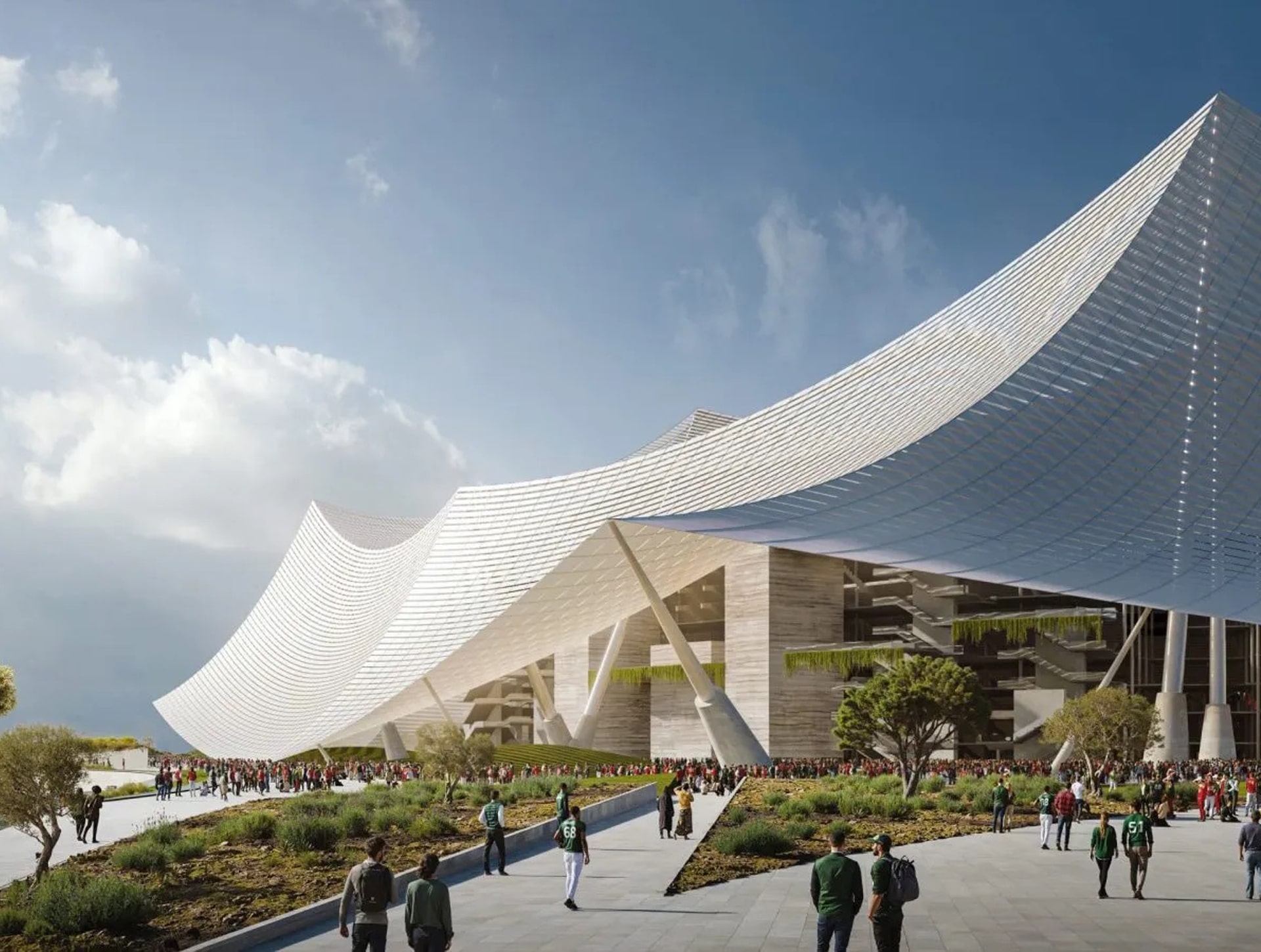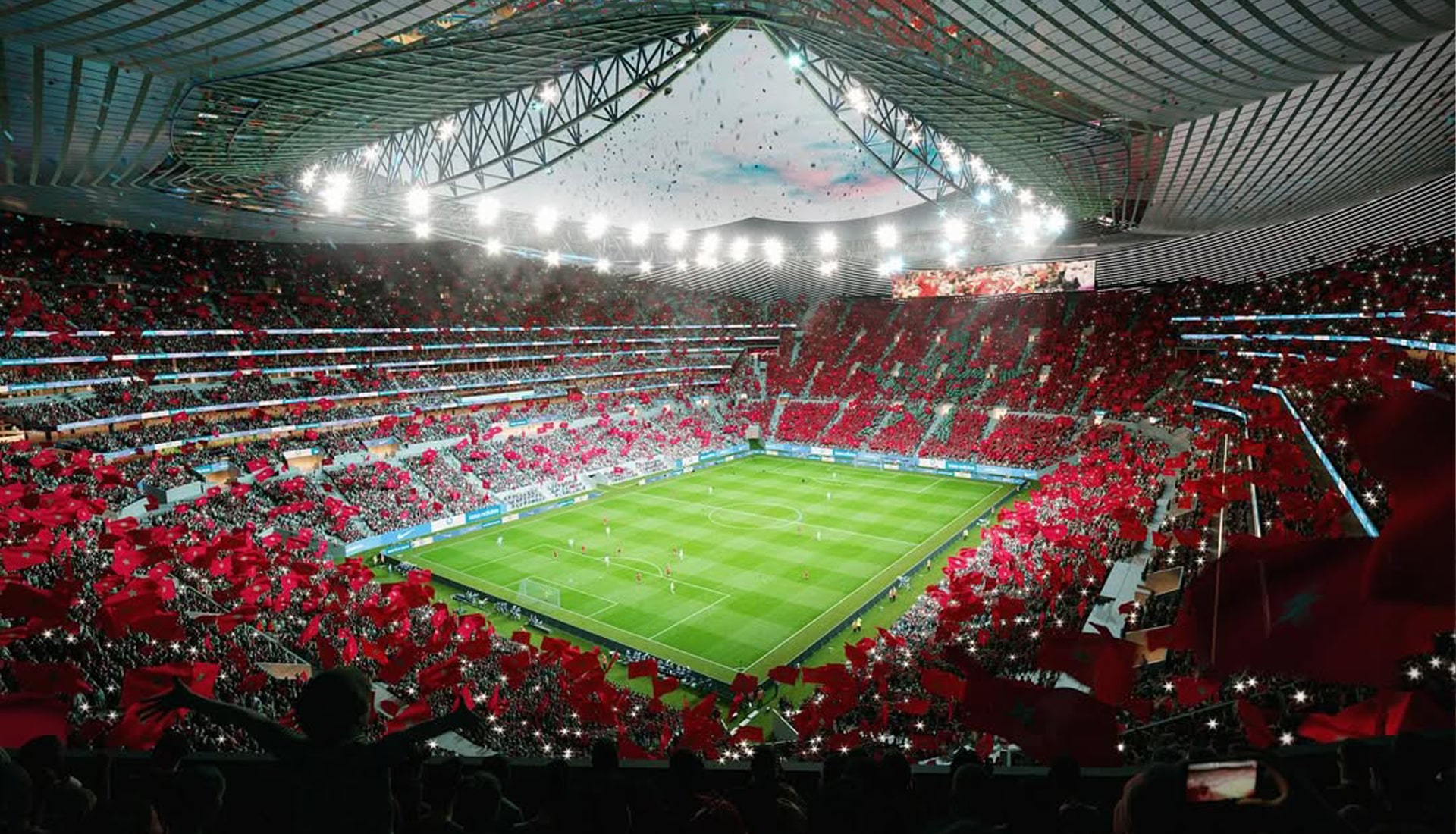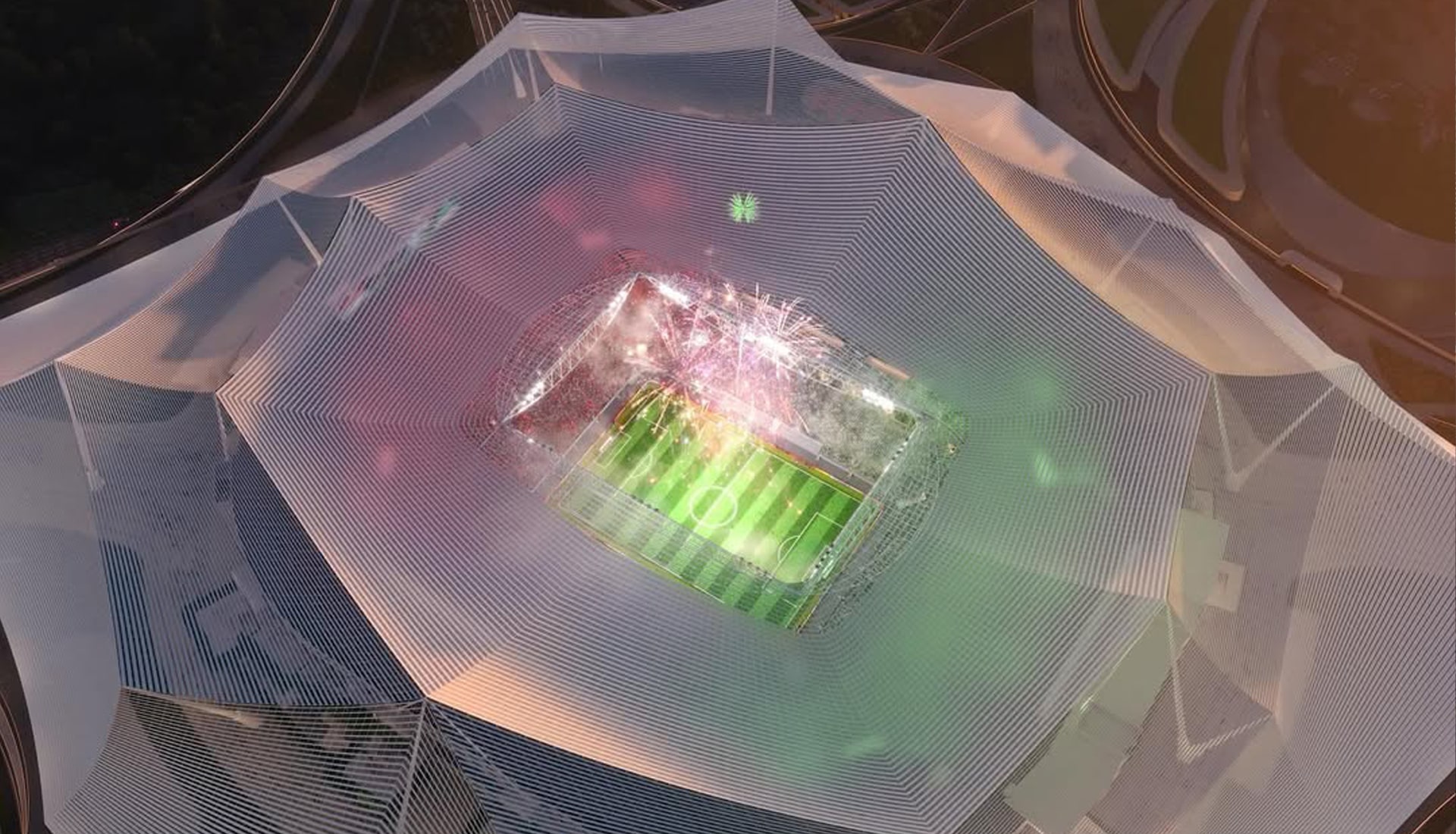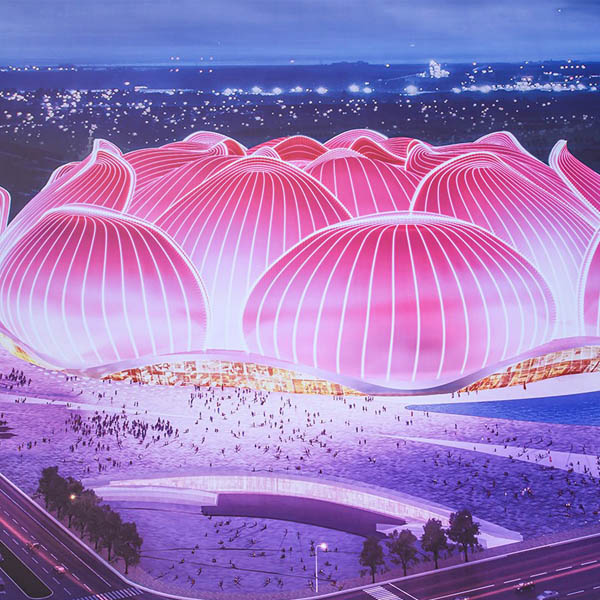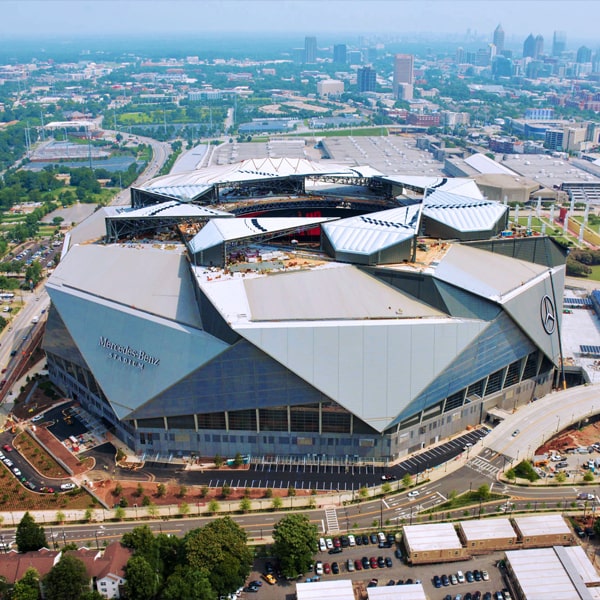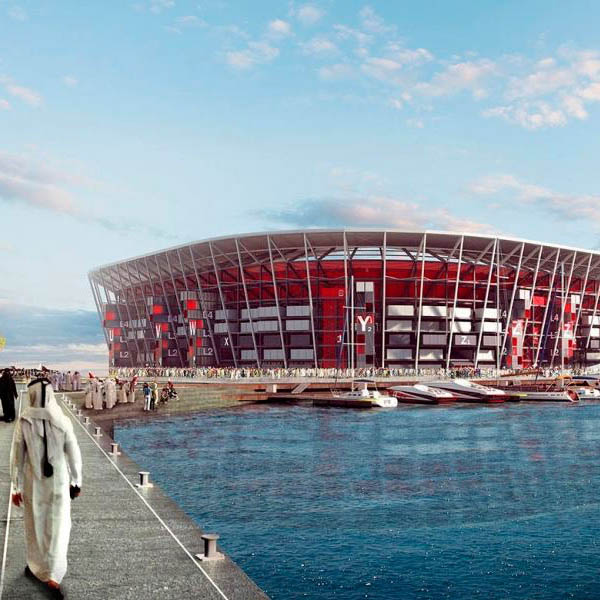The 2030 FIFA World Cup is set to make history as the first edition hosted by three countries from two different regions; Portugal, Spain and Moocco. And it’s the latter that are embracing the scale of the tournament, with Grand Stade Hassan II, which is set to to become the largest football stadium in the world.
In the ever-evolving world of football infrastructure, size has long been a statement of ambition. But now, Morocco is preparing to say it louder than anyone else. Welcome to the Grand Stade Hassan II — a future icon rising from the forested plains near Casablanca, and a bold architectural response to the question: What does the future of football look like?
With a record-breaking 115,000 capacity, the Grand Stade Hassan II is projected to become the largest football stadium in the world. But this isn’t just a numbers game. This is Morocco’s moment — a nation defining its place on football’s global stage as co-host of the historic 2030 FIFA World Cup, alongside Spain and Portugal. Three countries. Two continents. One shared dream.
For Morocco, the dream crystallises in Benslimane, some 40km north of Casablanca, where 100 hectares of raw earth are being transformed into something extraordinary. What’s being built here isn’t just a venue — it’s a symbol.
Designed by the Paris-based Moroccan architect Tarik Oualalou of OUALALOU + CHOI in collaboration with global stadium specialists Populous, the Grand Stade Hassan II is football architecture reimagined. Its design nods not only to cutting-edge engineering but to heritage, too — drawing inspiration from the “moussem,” a traditional Moroccan social gathering rooted in unity, community, and ritual. The stadium emerges from the landscape like a monumental tent, its floating, tent-like roof formed from a translucent aluminium lattice that casts a surreal glow by day and night.
The canopy doesn’t just shelter; it invites. Thirty-two grand stairways pierce the stadium's skin, doubling as monumental gateways and botanical walkways. Elevated 28 metres above ground, these green terraces offer fans an unexpectedly serene arrival experience — part stadium, part garden, all spectacle.
Make no mistake: the Grand Stade Hassan II is built to host football at its most elite level. With three steep tiers packed into both ends of the bowl, each side houses 29,500 general admission seats, designed for maximum intensity. Between them lie five tiers of high-end hospitality, with over 12,000 seats reserved for VVIP, VIP, and box patrons — all flanking the Royal box. This is premium football viewing, served with Moroccan hospitality and a skyline view of the Rif Mountains.
And while the grandeur is unmistakable, every detail is precision-engineered to FIFA’s highest standards. This isn’t just a venue in the World Cup; it’s a venue for the World Cup final. It’s a flagship stadium, a showstopper, and a future home to two local Moroccan clubs — ensuring the legacy doesn’t end in 2030.
Public financing was locked in late 2023, and groundworks are already underway. But what’s emerging from the soil of El Mansouria isn’t just concrete and steel — it’s vision. In a footballing landscape where identity is often overshadowed by uniformity, Morocco is planting a flag — and 115,000 seats around it.
The Grand Stade Hassan II doesn’t just join the conversation of iconic stadiums — it rewrites the script. This is architecture as storytelling. Football as culture. And ambition on a continental scale.
See you in 2030...
